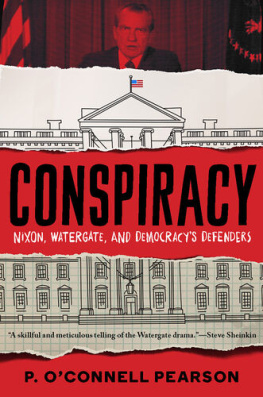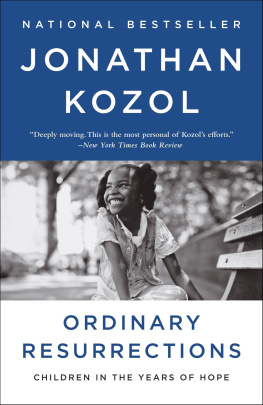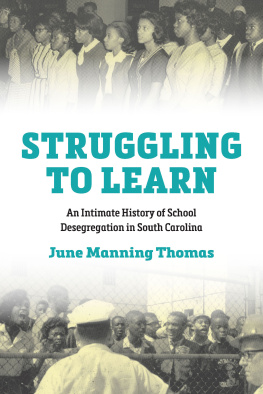
The Shame of the Nation
THE RESTORATION OF APARTHEID SCHOOLING IN AMERICA
Jonathan Kozol
CROWN PUBLISHERS
NEW YORK
CONTENTS
For Louis Bedrock:
a good teacher who
has stayed the course
TO THE READER
In writing this book, I have visited approximately 60 schools in 30 districts, situated in 11 different states. Most of these visits took place in the years from 2000 to 2005, although several of the narratives, as will be noted in the text, go back considerably earlier. The names of most of the children and some principals and teachers are disguised. Certain of the schools described have not been named, in order to protect the privacy of those within these schools who have confided in me. Most schools are identified by name, however, either in the text or in the notes, and no school names are disguised.
Quoted dialogue is drawn from notes, teachers and childrens recollections, and my own, and now and then, although not often, tape recordings of our conversations. Discussions of related topics are sometimes combined, and childrens writings and extended conversations are at times resequenced or condensed for narrative economy. Updated information on certain of the schools that are described and documentation for all matters that rely upon the public record are provided in the notes.
Introduction
I began to work among schoolchildren more than 40 years ago, in 1964, when I became a fourth grade teacher in the public schools of Boston, Massachusetts. I had never intended to become a teacher. I had attended Harvard College, where I studied English literature, then spent some years in France and England before coming back to Cambridge, where I planned to study for a graduate degree. In June of that year, three young activists for civil rights, the first contingent of a group of several hundred who had volunteered to venture into Mississippi to run summer freedom schools and organize adults to register to vote, disappeared in a rural area outside a town called Philadelphia. Their bodies were later discovered, buried in the mud beneath a dam beside a cattle pond. As we ultimately learned, they had been killed by law enforcement officers and members of the Ku Klux Klan.
In retrospect, it seems unlikely that it was this one event alone that could have led me all at once to reconsider or postpone the academic plans that I had made. I had been aware already of the rising fervor of the civil rights campaigns, the sit-ins and the freedom rides that had been taking place in several southern states, the growing protest movement in some northern cities also, and the dramatic March on Washington nearly a year before. But, perhaps because Id been in Europe, I had been detached to a degree from the intensity of passions stirred by these developments among young people of my age. With the murder of these volunteers, that feeling of detachment dissipated quickly. I got in my car one day and drove to Roxbury, the center of the black community of Boston, and signed up to be a reading teacher in a freedom school for children taking place within a local church.
Although I felt very shy and hesitant at first about my role as a white person who had never been in a black neighborhood before, I rapidly made friends among the parents who were active in this program and in others like it taking place at other churches and some storefront centers in the neighborhood. More to the point perhaps, I simply got to like that group of eight- and nine-year-olds I was assigned to teach and, like any other very insecure young teacher, I was probably flattered that they seemed to like me in return.
The six-week program ended all too soon; so, with the permission of their parents and the pastor, I extended classes with my students for two extra weeks after the summer program ran its course. It was during those more informal final weeks that I first saw my amateurish efforts bearing fruit in some of those small ways that a beginning teacher prays for. Even to see those 15 children showing up each day in torrid end-of-August weather in a steamy attic classroom in a musty-smelling church, and struggling hard to write a little essay Id assigned, seemed like a minor triumph, and it made me wish that I could have a lot more time to be with them. As Labor Day arrived, I suddenly made up my mind to see if I could get a job as a real teacher.
It proved much easier to get a teaching job in Bostons schools than I had expected. I had no credentials as a teacher, but I quickly learned this did not matter much so long as I was willing to accept a class within one of the schools that served the citys segregated neighborhoods and did not object to being paid the wages of a temporary teacher even after having been assigned a permanent position.
I remember vividly the sense of shock I felt when I first walked into the elementary school in which I was to spend most of a year: a gloomy-looking, overcrowded building that could not provide my students with a classroom of their own. We shared an undivided auditorium with 35 other children in another fourth grade class, and with a choral group, and with a group rehearsing for a play that somehow never was produced, and with a class of fifth grade girls, all black, who were released from educational instruction to be given sewing lessons several hours every day on old machines like those my grandmothers had used.
One windy afternoon that fall, an entire frame of windows in our make-shift class collapsed. I was standing close enough to catch the rotted frame before the glass could shatter on the children sitting just beneath it.
Some of the children seemed to have accepted these conditions or, at least, did not appear to feel they had the right to question them. Others did not suffer these indignities so passively but seemed to simmer with hostility toward many of the teachers and the principal. The anger of these students, which erupted typically when they were not in class but in the corridors or stairways, going to the bathroom for example, was efficiently suppressed. Children who misbehaved were taken to the basement of the school where whippings were administered by an older teacher who employed a rattan whip which he first dipped in vinegar in order to intensify the pain that it inflicted on a childs outstretched hands. One of my students landed in the hospital in the preceding year after hed received a whipping. His forefinger was permanently disfigured.
In the spring, the principal assigned me to another fourth grade class that had a classroom of its own but was in a state of chaos because it had had a string of substitute teachers almost the entire year. Many children in the class, according to their parents, had not had a permanent instructor since their kindergarten year. That year, I was their thirteenth teacher.
On the day I came into their class, most were reading at a second grade level. Their math abilities were at the first grade level. I have never forgotten one of the brightest students in that class, a very tall girl who sat in the back row and for days on end refused to speak to me. She had a look of stony and implacable resistance in her eyes. I tried my best to bring her out of her silence or at least to make her smile now and then, but I could not. I had the sense that she alone, of all those children, seemed to understand what had been done to them.
Sometimes in the afternoons, when I got out of school, I used to drop by at the office of a minister named James Breeden who had come to be a friend during the summer and who filled a very special role within the black community of Boston at the time, both as a leading figure in the fight for civil rights and as a scholarly and gentle mentor to impatient younger activists, or would-be activists, and to beginning teachers like myself. Breeden was only one of several strong and seasoned leaders in the neighborhood to whom I turned for reassurance and for steadying composure in that difficult first year. Over the next two years, after I rented an apartment in the area and made more friendships there, I grew increasingly attached to several of the older parent leaders, women for the most part, some of whom had been to two-year colleges, some to four-year colleges in Massachusetts, others to traditional black institutions in the South, where they had been immersed in the first stages of the civil rights campaigns and had been shaped by this politically.
Next page






